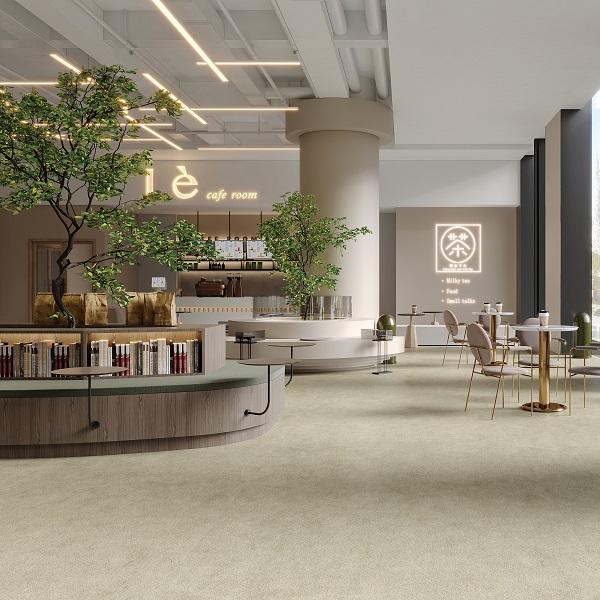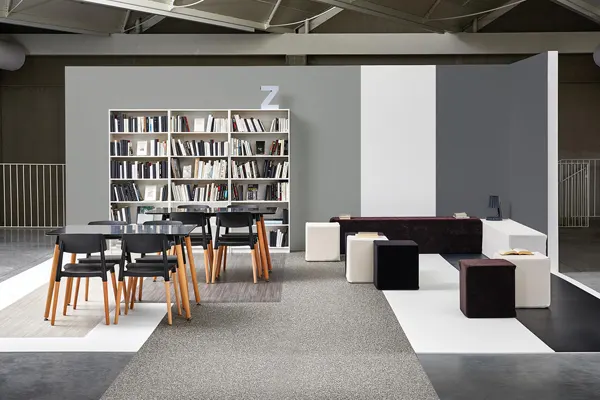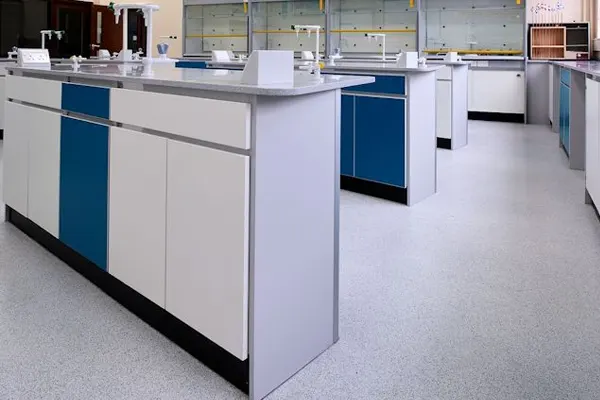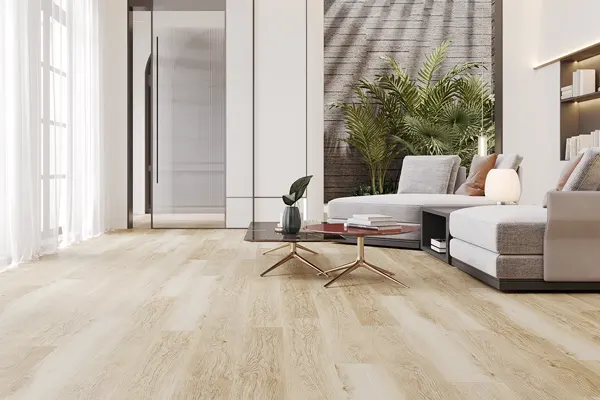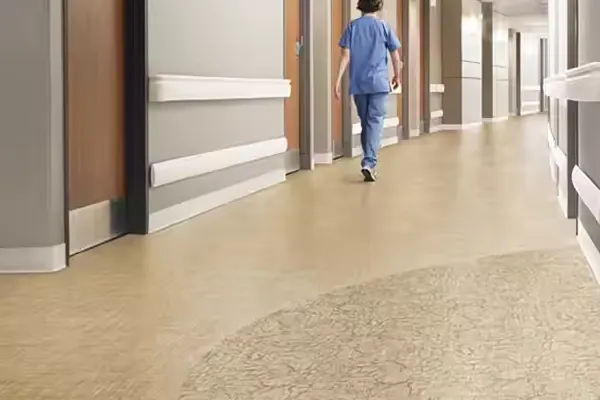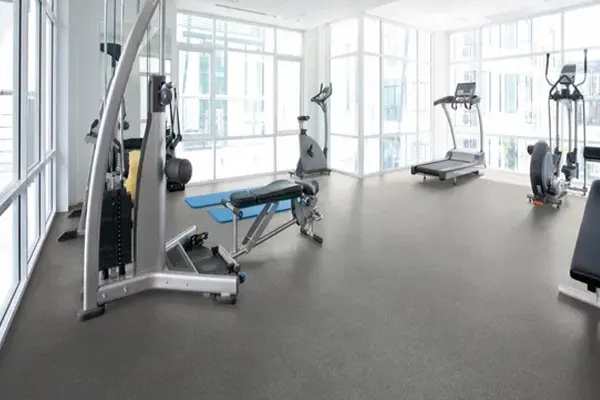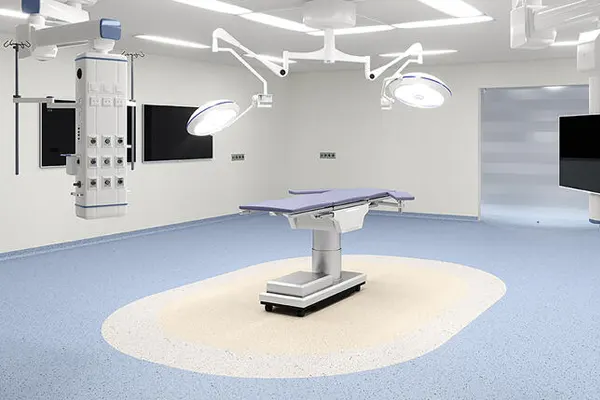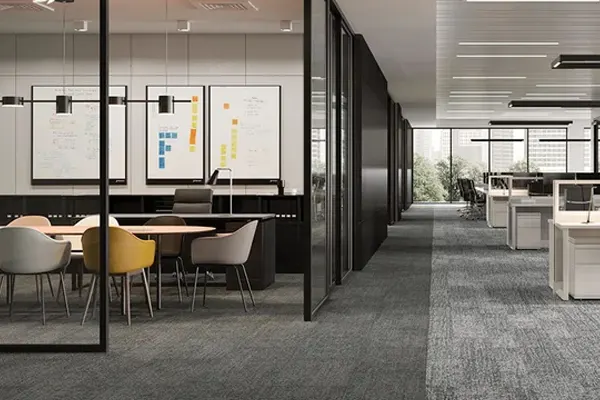Heterogeneous PVC flooring
Looking for tailored Heterogeneous PVC Flooring solutions? We are your ideal partner. As a specialized PVC flooring factory, we boast cutting-edge production technology and an experienced design team, empowering us to create custom Heterogeneous PVC Flooring to meet your unique needs. Our multi-layer construction allows for endless design possibilities, from realistic wood and stone textures to bespoke patterns and colors. We are constantly innovating and developing new products to address the evolving demands of the market. Whether you require specialized acoustic properties, enhanced slip resistance, or unique aesthetic effects, we can collaborate with you to develop the perfect Heterogeneous PVC Flooring solution. Learn more about our bespoke services, material options, and innovative technologies
The above is just a part of our Heterogeneous PVC flooring products. If you want to learn more or have special customization needs, please contact us immediately.
FAQs About Heterogeneous PVC flooring
What are the typical wear layer thicknesses available for your heterogeneous PVC flooring?
The typical wear layer thicknesses available for heterogeneous PVC flooring are as follows :
For household use: The wear layer thickness is usually between 0.15mm and 0.3mm.
For commercial use: The wear layer thickness is generally between 0.25mm and 1.2mm.
What is the total thickness range of your heterogeneous PVC flooring?
Thinner options (around 2.0 – 3.0mm)
These thinner heterogeneous PVC flooring is often used in areas where there is less foot traffic, such as in some home bedrooms or closets. Their relatively thin profile makes them more cost – effective and easier to install, especially in spaces where a significant height increase due to flooring is not desired.
What are the standard roll widths and lengths you offer?
The standard width is 2 meters and the standard length is 20 meters for each roll.
What is the backing material used in your heterogeneous PVC flooring ?
Heterogeneous PVC flooring typically has different backing materials, each with its own characteristics and functions:
Fiberglass backing
Function and advantages: Fiberglass provides excellent dimensional stability to the flooring. It helps the PVC floor to maintain its shape and size, preventing warping or shrinking. For example, in environments with temperature and humidity fluctuations, such as in basements or areas with poor climate control, fiberglass – backed PVC flooring can remain flat and intact. It also acts as a reinforcement layer, enhancing the overall strength of the flooring and allowing it to better withstand heavy loads and impacts.
Applications: Commonly used in both residential and commercial applications where stability and durability are crucial. In commercial settings like offices and small retail stores, the fiberglass backing helps the floor resist damage from foot traffic and the movement of office furniture.
Foam backing
Function and advantages: The foam backing offers enhanced cushioning and sound – insulation properties. It provides a more comfortable feel underfoot, reducing the impact on joints when walking. For instance, in residential bedrooms or living rooms, the foam – backed heterogeneous PVC flooring can create a quieter environment by reducing the transmission of impact noise. It also has some degree of thermal insulation, helping to keep the floor surface warmer in cold conditions.
Applications: Ideal for use in residential areas where comfort and noise reduction are priorities. It’s a popular choice for home interiors, especially in multi – story buildings where sound transmission between floors can be a concern.
Polyurethane (PU) backing
Function and advantages: PU backing provides good chemical resistance and moisture – proofing capabilities. It helps protect the flooring from damage caused by spills of various chemicals, such as household cleaners or food and beverage spills. It also serves as a barrier against moisture, preventing the growth of mold and mildew. For example, in kitchens and bathrooms, PU – backed PVC flooring can better withstand the wet and chemically – active environment.
Applications: Primarily used in areas that are prone to moisture and chemical exposure, like kitchens, bathrooms, and laundry rooms. In industrial kitchens or food – processing areas, the chemical – resistant PU backing is essential to maintain the integrity of the flooring.
What is the fire resistance rating and what standards do you adhere to?
The fire resistance rating of heterogeneous PVC flooring is commonly B1 level, and it usually adheres to the following standards:
GB 8624-2012
– This is a Chinese national standard that classifies the combustion performance of building materials. Under this standard, B1 level materials are defined as flame-retardant building materials, which means they have a good fire-retardant effect. In the event of a fire in the air or under high temperature, they are difficult to ignite, do not spread quickly, and the combustion stops immediately once the fire source is removed.
ISO 10582:2017
– This international standard specifies the characteristics of non-cushioned, heterogeneous poly(vinyl chloride) floor coverings. While it doesn’t directly define the fire resistance rating in the same way as GB 8624-2012, it provides a comprehensive set of requirements for PVC flooring products, which includes aspects related to their performance in fire scenarios to some extent. For example, it may require that the flooring does not contribute to the rapid spread of fire or the release of excessive smoke and toxic gases during a fire, which is in line with the general principles of achieving a certain level of fire resistance.
ASTM E 648
– This is an American Society for Testing and Materials (ASTM) standard test method for critical radiant flux of floor-covering systems using a radiant heat energy source. It measures the ability of a flooring material to resist the spread of flame when exposed to a heat source. Although not specific to heterogeneous PVC flooring’s fire resistance rating, it is one of the important tests that can be used to evaluate its fire performance characteristics, especially in relation to how it responds to heat and flame exposure.
What are the slip resistance ratings and testing methods used?
R-Value Rating: In the European standard BGR 181, the slip resistance grade of elastic materials is specified to be between R9 and R11, where a higher grade indicates better slip resistance. For example, a flooring with an R11 rating has better anti-slip properties than one with an R9 rating, and is more suitable for areas with higher slip risk, such as commercial kitchens or bathrooms.
What is the indentation resistance of your heterogeneous PVC flooring?
The indentation resistance of heterogeneous PVC flooring is usually measured by the indentation depth after a certain load is applied for a specific period. For example, under a standard load of 500 N (Newtons) applied for 24 hours, the indentation depth of good-quality heterogeneous PVC flooring will be less than 0.3 mm. However, this value can vary depending on factors such as the thickness of the flooring, the quality of the PVC material, and the type of backing.
In some high-performance heterogeneous PVC flooring designed for commercial use, the indentation resistance can be even better. For example, in flooring used in heavy-traffic areas like shopping malls or exhibition halls, the indentation depth under a load of 1000 N for 24 hours will be less than 0.2 mm.
What is the dimensional stability of the flooring under temperature and humidity fluctuations?
Response to Temperature Fluctuations
Expansion and Contraction: PVC has a coefficient of thermal expansion. When the temperature rises, the flooring will expand, and when the temperature drops, it will contract. For example, in a temperature range from – 10°C to 40°C, a well – made heterogeneous PVC flooring may have a linear expansion coefficient in the range of about 5 – 10×10⁻⁵ /°C. This means that for every 1°C increase in temperature, a 1 – meter – long strip of flooring may expand by about 0.05 – 0.1 mm.
Effect of High Temperatures: At very high temperatures (above 60 – 70°C), the PVC may soften, which can lead to more significant deformation. However, in normal indoor environments, such extreme temperatures are rare. In areas where there is a risk of high – temperature exposure, such as near heating vents or in industrial settings, it’s important to consider the flooring’s temperature tolerance.
Response to Humidity Fluctuations
Absorption and desorption of Moisture: Heterogeneous PVC flooring can absorb and release moisture depending on the humidity of the environment. When the humidity is high, the flooring may absorb moisture and swell slightly. Conversely, in a dry environment, it will lose moisture and may shrink. The degree of swelling and shrinking depends on the composition of the flooring and the structure of the backing material. For example, flooring with a more porous backing may be more affected by humidity changes.
Dimensional Changes in High-humidity Environments: In a very humid environment (relative humidity above 80 – 90%), the width of the flooring may increase by about 0.1 – 0.3% compared to its original size. This can cause problems such as the edges of the flooring pushing against the walls or adjacent floorboards, leading to buckling.
Does your heterogeneous PVC flooring contain any harmful substances like phthalates or heavy metals?
Our heterogeneous PVC flooring does not contain harmful substances such as phthalates or heavy metals. Here’s why:
Our Stringent Standards: We are committed to using non-phthalate plasticizers in the production of our heterogeneous PVC flooring. By doing so, we ensure that our products do not pose the risks associated with phthalate exposure, making them safer for both human health and the environment.
Our Quality Control Measures: We have strict quality control procedures in place to ensure that our heterogeneous PVC flooring is free from heavy metals. Our raw materials are carefully sourced from reliable suppliers who provide certifications guaranteeing the absence of heavy metals. Additionally, we conduct regular tests during the production process to verify that our products meet the highest safety standards and are free from any harmful heavy metal contaminants.
What is the sound absorption (impact sound reduction) performance of your heterogeneous PVC flooring?
Sound Absorption Basics
Heterogeneous PVC flooring can provide effective sound absorption, particularly for impact sounds. Impact sound is generated when an object strikes the floor, such as footsteps or the movement of furniture. The flooring’s ability to reduce this type of sound is measured in decibels (dB).
Typical Impact Sound Reduction Values
In general, good-quality heterogeneous PVC flooring can reduce impact sound by around 15-25 dB. For example, if the original impact sound level in a room without any sound-reducing flooring is 70 dB (a relatively high-pitched and noticeable sound), the installation of this type of PVC flooring can potentially reduce the sound level to 45-55 dB, which is a much more comfortable and less obtrusive level.
The high-performance heterogeneous PVC flooring, especially those with added sound-insulating layers or special backing materials, can achieve even better results. They may reduce impact sound by up to 30 dB or more.
What are the different layers that make up your heterogeneous PVC flooring and what is the composition of each layer?
Heterogeneous PVC flooring generally has these layers and their compositions:
Wear Layer
Composition: Mainly PVC resins with stabilizers like calcium-zinc stabilizers.
Function: On top, withstands abrasion, scratches, and chemical exposure for daily wear. Thickness varies by usage.
Decorative Layer
Composition: Printed film of PVC or similar, with pigments, dyes, and sometimes UV-resistant coating.
Function: Determines the flooring’s appearance, mimicking natural materials.
Core Layer
Composition: PVC with fillers like calcium carbonate.
Function: Provides structural support, affects thickness, strength, indentation resistance, and shape stability.
Backing Layer
Composition: Fiberglass mesh or foam (e.g., PU foam) with possible additives.
Function: Enhances dimensional stability or offers cushioning depending on the type.
What quality control measures are in place during manufacturing to ensure consistent quality?
The following are the quality control measures during the manufacturing of heterogeneous PVC flooring for consistent quality:
Raw Material Inspection
– Check purity, quality of raw materials like PVC resins and additives.
– Regularly audit suppliers to ensure reliable material supply.
In-Process Inspection
– Control mixing parameters.
– Monitor layer formation for thickness, smoothness etc.
– Ensure printing quality.
– Check dimensional stability during production.
Finished Product Inspection
– Visually examine for surface defects.
– Test performance aspects like wear, scratch, indentation and slip resistance.
– Conduct chemical and environmental testing.
– Inspect packaging.
Quality Management Systems
– Adhere to standards like ISO 9001 and establish comprehensive quality management systems.
Do you have ISO 9001 or other relevant quality management certifications?
Yes, we do. In addition to ISO 9001, there are other relevant certifications we have, such as:
- ISO 14001: This certification pertains to environmental management systems, demonstrating a company’s commitment to minimizing its environmental impact throughout the manufacturing process.
- CE Marking: In the European Union, the CE mark indicates that a product complies with relevant EU health, safety, and environmental protection legislation, ensuring its suitability for sale and use within the EU market.
What is your production capacity and what are the typical lead times for large orders?
Our annual production capacity reaches ten million square meters. The typical lead time for large orders is usually 15 working days. The normal delivery time for large orders is around 20 days.
What is your minimum order quantity (MOQ) for heterogeneous PVC flooring?
Our minimum order quantity for heterogeneous PVC flooring is 40 square meters.
What are your pricing terms and accepted payment methods?
Our pricing term includes FOB, FCA, EXW,CIF,CFR,DDP,DAP. We accept TT, PAYPAL,ALIPAY, ALIBABA.
Can you provide samples, brochures, and technical data sheets for your heterogeneous PVC flooring?
Yes, the samples, brochures, and technical data sheets are provided free by us.
Do you offer private labeling or OEM services for heterogeneous PVC flooring?
Yes, we offer private labeling or OEM services for heterogeneous PVC flooring.
What is your warranty policy for your heterogeneous PVC flooring and what does it cover?
We offer a 5-year manufacturer’s commercial warranty for our heterogeneous vinyl sheet flooring.
What the Warranty Covers
- Material Defects: The warranty usually covers defects in the PVC material itself, such as cracking, peeling, or bubbling that occur due to manufacturing flaws and not because of improper use or installation.
- Wear Resistance: For a certain period, the flooring is warranted to maintain its wear resistance properties. If the wear layer wears out prematurely beyond normal use expectations, it may be covered by the warranty.
- Dimensional Stability: It may cover issues related to the flooring’s dimensional stability, like warping or shrinking that are not caused by external factors such as excessive moisture or improper sub-floor preparation.
Exclusions
- Improper Installation: If the flooring is not installed according to the manufacturer’s guidelines, any resulting damage or defects are typically not covered. This includes issues like improper adhesive application, failure to acclimate the flooring before installation, or incorrect subfloor preparation.
- Normal Wear and Tear: Scratches, scuffing, and other cosmetic damages that result from normal daily use are usually excluded from the warranty. Also, damages caused by high heels, sharp objects, or heavy furniture dragged across the floor without proper protection are not covered.
- Chemical or Environmental Damage: Damage caused by exposure to chemicals, such as spills of harsh cleaning agents, solvents, or other substances that react with the PVC, is not covered. Similarly, damage from environmental factors like sunlight fading (if the flooring is not intended for outdoor use), moisture from floods, or alkali from the subfloor is excluded.
- Abuse or Misuse: Intentional damage, abuse, or using the flooring in a way that exceeds its intended purpose or load capacity voids the warranty. This includes using it in areas with extremely heavy machinery or equipment beyond what the flooring is designed to handle.
What packaging options do you offer for shipping to protect the flooring during transport?
The single-roll product is packed in kraft paper with a cushioned foam shell. Then we use pallet packing, includes 4, 10 or 16 rolls’ patterns.
Is the issue you are looking for regarding Heterogeneous PVC flooring not included in the above list? Do you want to know about some other Heterogeneous PVC flooring issues? Please contact us immediately and we will provide you with satisfactory answers.
Application fields of anti-static PVC flooring
Do you want to know more about the application areas of Heterogeneous PVC flooring? Do you want to know if LIFLOR’s PVC flooring can meet your requirements? Welcome to contact us immediately, we will provide you with satisfactory answers.
Have Anything To Ask Us?
Please fill in the detailed information in the form,
and we will contact you as soon as possible

